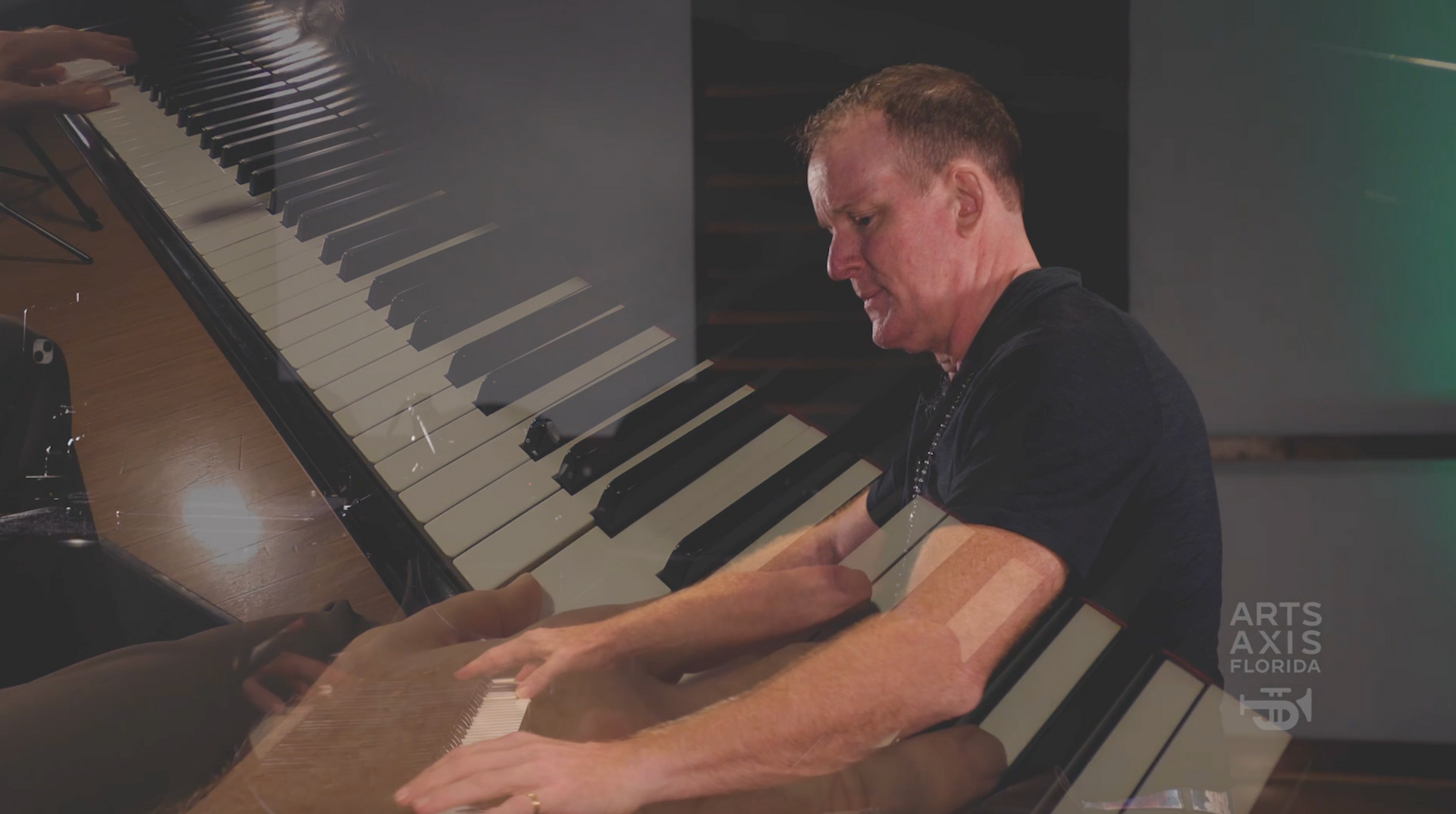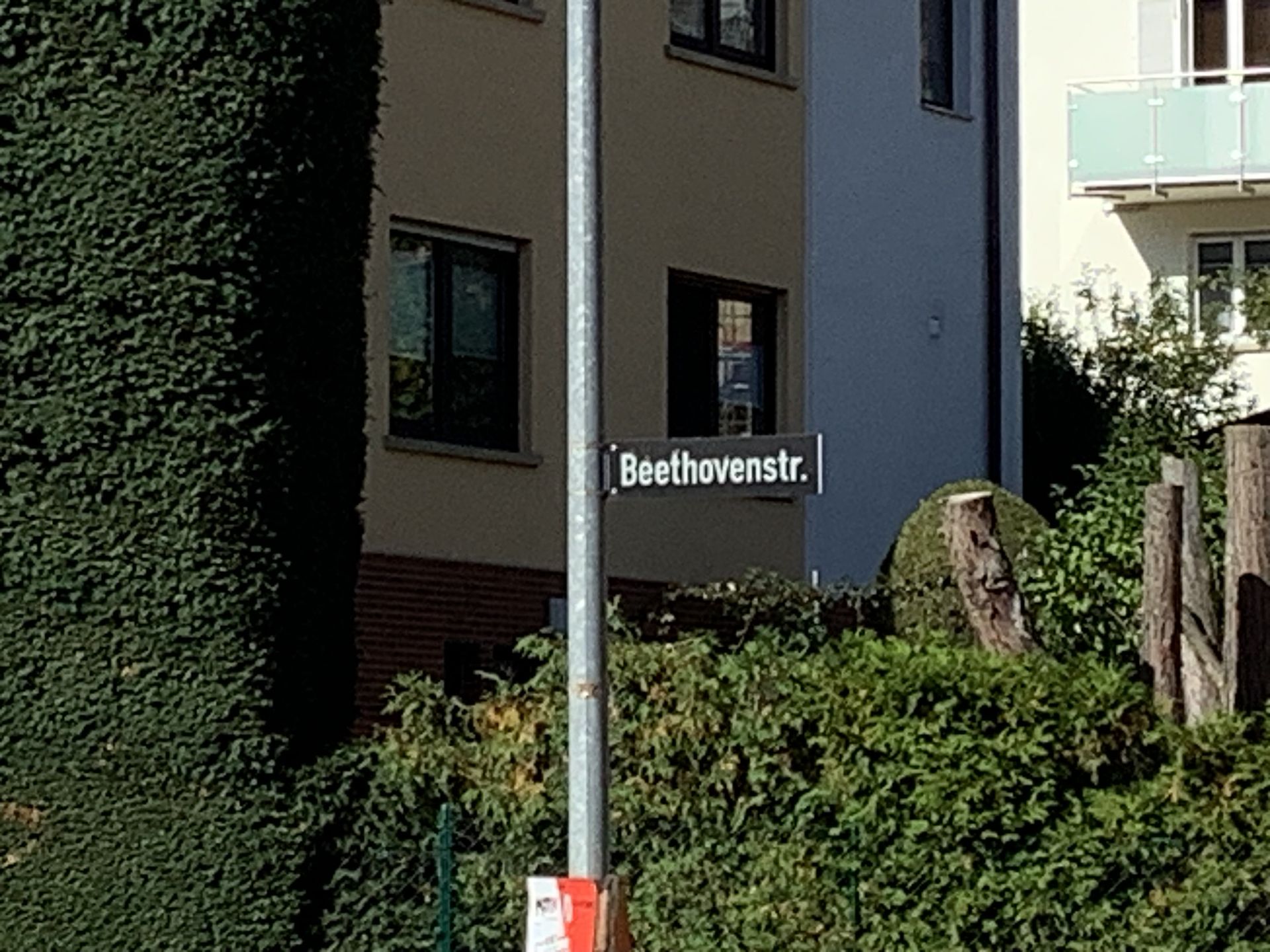Pianist David Miller Performs a Special Solo Set in the WUSF Studio

Photo of David Miller in the WUSF Studio. Photo by Jazz on Arts Axis Florida
David A. Miller was born in 1967. He studied music sporadically throughout his life, taking him from the Arizona State music program, London University, Mesa Community College Jazz Program, and to NYU. He wrote and conducted his first symphony in 1995 which was read by the Telluride Orchestra. David moved to China in 1996 and performed weekly in Beijing. He won silver prize for foreigners singing in Chinese in 1997. After living in Asia for nearly five years, he attended Chinese Medical school in New York City and drastically switched careers. Now residing in Sarasota, he is performing stand up comedy, already appearing twice at McCurdy's Comedy Club and will be performing original piano works when he returns to Beijing.
Song List:
1. Thank You for This Life
2. Beethoven Strasse
3. The Shock of Love
Personnel:
Music Written and Performed By
David Miller
Artwork Created By
Selah Clough
In Loving Memory of
Dan & Mary Miller
Camera/Editing
Warren Buchholz
Assistance/Setup
Andy Harrison
Sound
Jackson Harpe

Where can we find you play live?
David Miller: In the next month, I have to go to China to see my mother in law who became ill. I will use the video you helped me make get a spot on a Chinese TV show in Beijing. I hope to appear in the summer. When I return, I will be organizing my first concert at Florida Studio Theater in downtown Sarasota. I am writing a performance piece called "From Mandarin To Mozart" which talks about the legends of how music was discovered in China all the way to the space shuttle Challenger.
While that is being written, I have a string of stand-up comedy routines planned that contain musical numbers at McCurdy's Comedy Club and in St. Pete.
What are some performance tips you wish you knew when you first started?
My preference is to play very well rehearsed material with spaces for being spontaneous written in. To be successful performing live, bands should think about the following:
1) Dynamic changes between crescendo and decrescendo throughout the song, within a phrase, and even within a measure. It makes the audience pay attention.
2) Tempo changes within a song but if you have the audience dancing, keep the beat longer and their feet moving. James Brown did that all the time.
3) Extended chords that let the sounds of the instruments ring and the acoustics of the room be felt. The Who is an example of doing that in rock.
4) Isolation: At certain times throughout the set, let one instrument carry the song for a bit alone, pair up different instruments for a few measures, mix it up and then the listener doesn't get fatigued from feeling trapped inside a song that never changes flavor.
5) Plan a few seconds of silence, let the crowd hear their hearts beating, talk to the crowd.
6) I did video crew for Sheila E. 30 years ago and my only job was to make sure the sound to video input never hit red. I thought it would be easy but she changed dynamics so many times I had to watch it constantly. She taught me two concepts, Ping Pong and Razzle Dazzle:
Ping Pong: Rehearsed band interaction that tells a story or gets a laugh or an emotional response. Prince was very good at this. Sheila E. was his drummer. She is the daughter Pete Escovedo who played percussion for Santana. Ping Pong also involves the crowd and finds a way to make people part of the show. This isn't easy to do and comedians call it crowd work.
Razzle Dazzle: It is what makes your live set into a performance. Spend time working through lists of ideas of what special light effect, sound effect, prop, costume, or activity will give the SPARKLE to your show that pins the blue ribbon to your underpants. In my old group, we threw paper boomerangs into the crowd and then gave lessons how to throw them during a drum/bass cadenza. Jack Valentine in 1975 was the first guy to play drums upside down so beat that! It doesn't have to be extreme, just creative and enough to give a little razzle dazzle.

Photo of Beethovenstr. street sign in Stuttgart, Germany taken by David Miller
How did you come up with Beethoven Strasse?
In Stuttgart, Germany where I walked up the hill and wrote the melody in my head while walking on Beethoven Strasse. I went back to my friend's flat and knocked it out on a kid's keyboard, then wrote it down on paper on the plane home.
During "Thank You for This Life" you begin to hit the keys in a chaotic way. What message do you want audiences to take away when they hear this part of the song?
The crashing parts on the piano where I bang up the octaves represent violence and war. The higher notes fall down like missiles and like the cries of the suffering people. The low notes strike twice before balance returns and beauty emerges just in time. The sun touches the mountain's fingertips and all is well.
Why do you enjoy performing jazz?
Jazz is like classical music but with the green light to make mistakes and play wrong notes and the freedom to improvise. Classical music puts you through the music grinder to develop technique, musical intelligence, and passion but you don't deviate from what is written, especially in competition. However, in Jazz, Victor Wooten, Steve Smith, and Scott Henderson played Giant Steps by John Coltrane backwards and still called it Giant Steps. You couldn't do that with Beethoven as easily. Jazz is special because musicians continue to try to find ways to modulate from one chord to another with maximum trauma!
This interview has been edited for length and clarity.
Jazz on Arts Axis Florida is powered by WUSF, Community Foundation Tampa Bay, and by viewers like you. Thank you!





